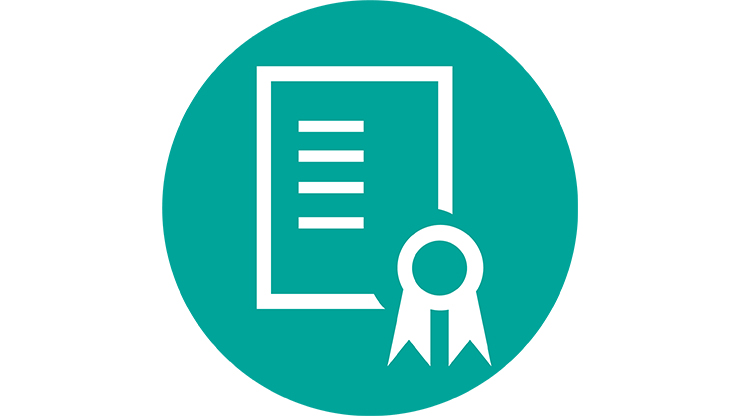Congratulations to the 2025 SIAM Postdoctoral Support Program Recipients
SIAM is pleased to announce four new researchers who will receive funding through the SIAM Postdoctoral Support Program. These early career professionals proposed a program of research collaboration with an established mentor in the SIAM community.
Two mentor/mentee pairs are being funded through a Strategic Industry Grant from the C.H. Robinson Foundation to support research in climate, emissions, and/or supply chain management, helping the supply chain and logistics industry thrive.
The SIAM Postdoctoral Support Program is made possible by gifts to the SIAM Postdoctoral Support Fund, which was established by Drs. Martin Golubitsky and Barbara Keyfitz. The program provides up to $15,000 in financial support for postdoctoral researchers to work with a mentor from a different institution. The goal is to foster direct research experience and professional development. Up to four postdoc/mentor pairs are selected annually. The application remains open until annual funding is expended.
If you’d like to make a contribution to the SIAM Postdoctoral Support Fund, please click here. If you have any questions about giving to SIAM or would like to learn more about the ways that your gift can make a difference, please contact Abby Addy, Director of Development and Corporate Relations, at aaddy@siam.org or (267) 648-3529.
Govanni Granados, University of North Carolina at Chapel Hill
Mentor: Malena Español, Arizona State University
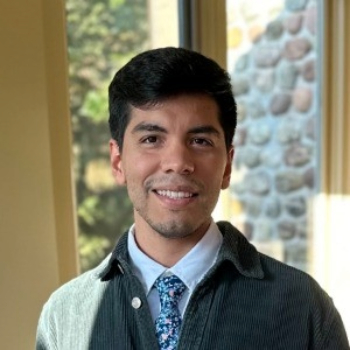
Dr. Govanni Granados is a postdoctoral research associate in the department of mathematics at The University of North Carolina at Chapel Hill, where he is part of the Research Training Group: Partial Differential Equations (PDEs) on Manifolds. He obtained his Ph.D. in mathematics from Purdue University in May 2024. Previously, he attended California State University, Northridge where he received a B.S. in mathematics with an emphasis in statistics and a minor in philosophy.
Dr. Granados’ research focuses on inverse problems for PDEs. More precisely, he has been investigating the applications of qualitative methods to solve shape reconstruction problems arising from tomography and inverse scattering theory. Recently, he has been interested in generalizing these reconstruction algorithms to handle limited data as well as expanding the applications to problems with higher-order boundary conditions.
Q: What was the research you proposed?
A: This project focuses on the challenges of electrical impedance tomography with partial boundary data, where limited electrostatic measurements make interior conductivity reconstruction even more difficult. Specifically, we will study two inverse problems under this constraint: an inverse shape problem and an inverse parameter problem. To address these challenges, we will develop a qualitative method for shape reconstruction and apply machine learning techniques for parameter estimation, providing complementary approaches to solving the inverse problems with incomplete data.
Q: How will this award help you achieve your career goals?
A: This award will help me achieve my goal of becoming a university professor. It will provide me with resources and support to expand my research in inverse problems for PDEs. A key benefit of this award is the opportunity to collaborate closely with my mentor, Professor Malena Español, a renowned expert in the field. This will allow me to deepen my understanding of computational approaches to inverse problems. Additionally, this award will allow me to broaden my research profile and expand my network by fostering connections with researchers in applied mathematics.
Q: What do you most look forward to in working with your mentor?
A: It is an honor to work with Professor Malena Español, who has already been a mentor to me, outside of my home institution. I look forward to combining our research strengths to solve our problem and to collaborating in person. I am also eager to engage with the research environment at Arizona State University.
Jorge Reyes, Virginia Tech
Mentor: Leo Rebholz, Clemson University
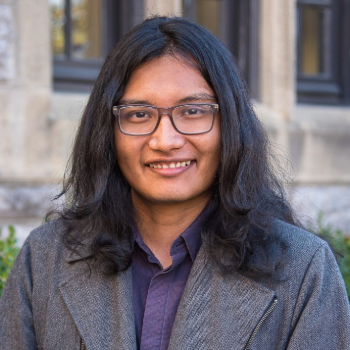
Dr. Jorge Reyes is a postdoctoral associate in the department of mathematics at Virginia Tech. He received his Ph.D. in computational mathematics at the University of Nevada, Las Vegas in May 2023. Broadly, his research revolves around numerical analysis, primarily in computational fluid dynamics, while also branching into traffic modeling, and, occasionally, biological applications.
Currently, his research focus is on the development of data-driven Galerkin (d2G) methods for turbulence. This involves the study of Galerkin reduced-order models (G-ROMs) constructed from traditional numerical methods like finite element methods and spectral element method.
Q: What was the research you proposed?
A: We aim to develop novel ROMs based on the relatively new Low-Rank Tensor Decomposition (LRTD) framework. The LRTD-ROM has recently been shown to be highly effective in generating accurate ROMs from data with varying parameters. In particular, we seek to incorporate continuous data assimilation (CDA) techniques to improve long-term accuracy across a wider range of parameters. Advancing methodologies for both ROM and CDA is crucial for cutting-edge applications such as digital twins, artificial intelligence, machine learning, as well as more traditional engineering and scientific applications.
Q: How will this award help you achieve your career goals?
A: This award coincides with the final year of my current postdoc and can serve as a springboard toward achieving my career goal of becoming a professor at a research university. The support provided through this program gives me the opportunity to expand my personal research portfolio while potentially fostering new connections. Beyond the clear benefits of collaborating with my mentor, Dr. Rebholz, Clemson University’s math department is an exciting research environment I am eager to learn from.
Q: What do you most look forward to in working with your mentor?
A: When teaching, I often joke with my students that “math is a team sport.” Over the years, I’ve found that math, and life in general, is more fulfilling when shared with others. Continuing with that analogy, I can think of no better teammate to tackle this project with than Dr. Rebholz. He is a straightforward, humble, and highly intellectual individual whose casual nature is truly inspiring to me.
C.H. Robinson Postdoctoral Pairs
Ruth Rhiannon Chapman, Niels Bohr Institute, University of Copenhagen
Mentor: Maria K Cameron, University of Maryland
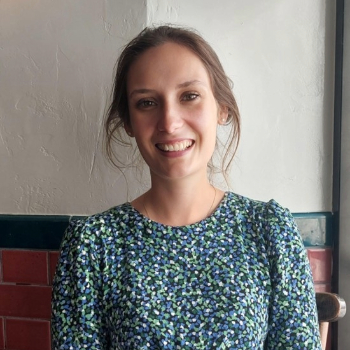
Dr. Ruth Chapman is a postdoctoral researcher at the University of Copenhagen, who works on dynamical systems modeling of bi- and multi-stable systems in the Earth’s climate. Ruth completed her Ph.D. in mathematics at the University of Exeter in collaboration with the UK Met Office, where she studied noise-induced transitions in stochastic, data-adapted box models of the Atlantic Meridional Overturning Circulation (AMOC). Her work has led to publications in Chaos, Environmental Research Communications, and Weather, and she is a contributing author to the upcoming Global Tipping Points Report 2.0. Previously, she received an M.S.ci in physics from the University of Nottingham.
Her current research includes building a Stommel-like laboratory experiment to explore early warning signals of tipping in a physical set-up, supported by computational modeling. She has presented at major international conferences, co-convened sessions at the European Geosciences Union and received awards for both talks and posters. Alongside her research, Dr. Chapman is committed to academic citizenship and outreach, having organized reading groups, held teaching responsibilities, volunteered at public science festivals, and co-led a Women in Climate network.
Q: What was the research you proposed?
A: The proposed collaboration aims to extend computational methods for studying rare events in stochastic systems and use them to investigate conceptual climate models and quantitatively describe the possible tipping scenarios. AMOC is crucial for the Earth’s climate system. We plan to analyze a collection of AMOC models admitting bi-stability subjected to various types of noise and stochastic switches of parameters or parameter functions, to establish the likely transition mechanisms between their metastable states and estimate the expected transition times. Furthermore, we will explore how these anticipated results can be utilized to warn people about tipping before critical thresholds are crossed.
Q: How will this award help you achieve your career goals?
A: This is a very exciting opportunity to expand my academic network to colleagues in the U.S., and to continue with some work that was first started during my Ph.D. I also look forward to experiencing a different research group and culture, that includes a range of experiences and expertise I can learn from. I hope that this leads to further research opportunities in dynamical systems modeling, and contributes to a wider network and possible future collaborations.
Q: What do you most look forward to in working with your mentor?
A: Having previously discussed this work with Professor Cameron during my Ph.D., I am looking forward to working with the foremost expert who has developed the computational methods we will be applying. I also look forward to working with another woman in mathematics for the first time in my career.
Giulia Sambataro, Friedrich-Alexander-Universität, Germany
Mentor: Irina Tezaur, Sandia National Laboratories, Livermore, California
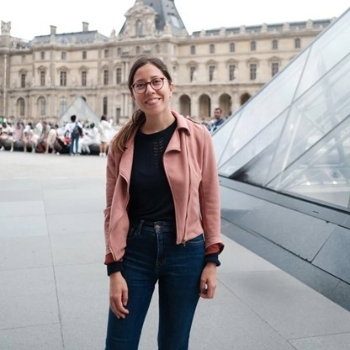
Dr. Giulia Sambataro is an Italian researcher at the FAU Erlangen-Nürnberg, Germany. She obtained her master’s degree in mathematical engineering from Politecnico di Milano, Italy, and she earned a Ph.D. in applied mathematics from the University of Bordeaux, France. She then held a postdoc position at École Nationale des Ponts et Chaussées, France.
Dr. Sambataro’s research focuses on the development and analysis of model order reduction techniques for solving parametrized problems in engineering, typically governed by partial differential equations. More recently, she has turned her attention to integrating physics-based and data-driven approaches to model multi-particle systems, with a particular interest in simulating crowd motion in the presence of obstacles.
Q: What was the research you proposed?
A: Our goal is to develop model order reduction methods that enable efficient and reliable solutions to pressing environmental challenges. We'll focus on three key applications: (i) modeling the dispersion of pollutant gases; (ii) simulating ocean-atmosphere interactions that influence climate and weather patterns; and (iii) understanding ice sheet melting dynamics, which are crucial for projecting future sea level rise. By integrating machine learning into our model reduction framework, we aim to make a meaningful leap forward in the numerical modeling of real-world problems tied to sustainable development.
Q: How will this award help you achieve your career goals?
A: Developing innovative numerical schemes that incorporate machine learning will mark a significant and original contribution to the scientific literature, thus advancing my academic career. I'm especially grateful for the opportunity to be mentored by Dr. Irina Tezaur, a globally recognized expert in model order reduction, with a strong focus on climate modeling. Thanks to this SIAM program, I'll also have the chance to expand my research network and, hopefully, start new collaborations within Sandia National Lab’s vibrant scientific community.
Q: What do you most look forward to in working with your mentor?
A: I met my mentor during my Ph.D., when she served as an examiner for my thesis manuscript; that experience was intellectually enriching. I’m now especially excited for the chance to work in person with her and her collaborators. There’s so much I’m looking forward to learning.
Related Reading
Stay Up-to-Date with Email Alerts
Sign up for our monthly newsletter and emails about other topics of your choosing.



